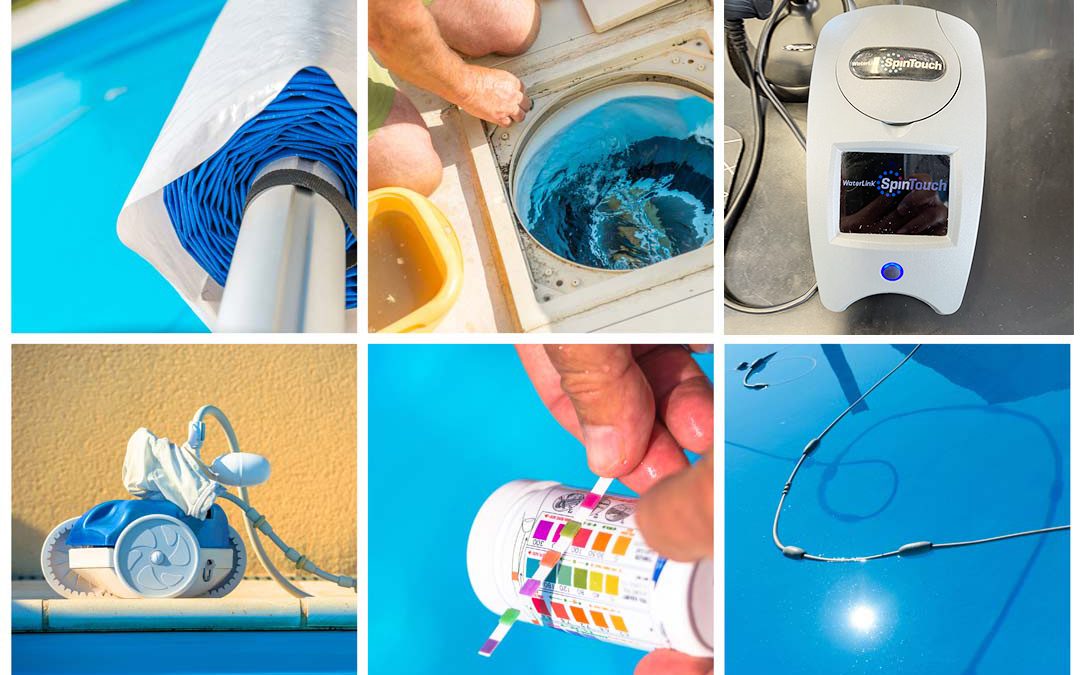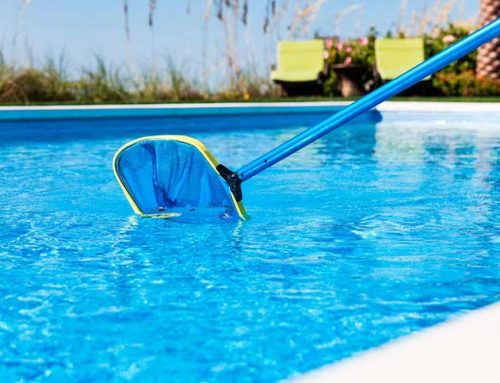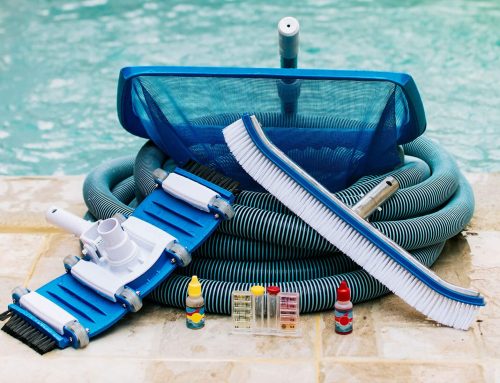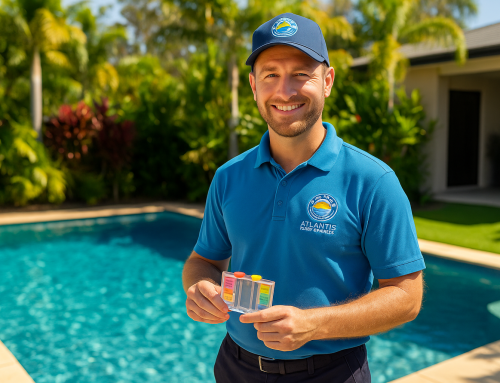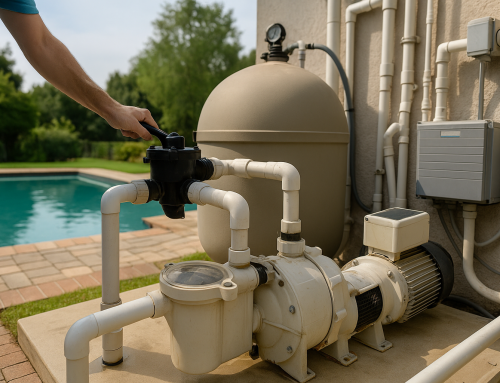Swimming Pool Efficiency – Winter Maintenance Guide
A properly maintained pool is much easier to continue to maintain throughout winter, so there are a number of checks and balances all pools should go through before the cold sets in.
Ignoring regular pool maintenance during the colder months means when the swimming season rolls around, pool owners will be faced with the arduous task of eliminating the build-up of microorganisms and algae that can lead to serious health risks if left untreated.
Ongoing Maintenance
It is important pool owners have a regular pool maintenance schedule that includes weekly inspections and a professional check-up periodically.
With limited use during winter and reduced heat and sunlight, the approach to pool maintenance changes regarding level of pool chemicals, circulation and water filtration required. However, there are five steps to make year-round pool maintenance easy.
Circulation:
Circulation of pool water allows chemicals to take effect in the pool. The more the water is kept in motion, the more difficult it is for bacteria and algae to develop as well. While pool pumps should ideally run up to twelve hours every day during peak swimming season, winter only requires the pool to be run up to six hours. Electrical timers and multi speed pool pumps also make it possible to reduce power consumption throughout winter and the rest of the year. Check with your pool and spa professional for the right reducing of hours for circulating swimming pool water for filtration and circulation. Water circulation requires the volume of water to be turned over once (1) per day during winter.
Water filtration:
The filter is the heart of the pool, catching and removing both visible debris and most microscopic matter in order to prevent bacteria developing in the pool. The filter should be checked weekly to ensure effective and efficient operation, with a filter backwash every month to ensure it is running at maximum capacity. In order to save water and reduce operation costs, a number of products are available to capture debris before it enters the filter.
Pool cleaning:
All swimming pools have areas where little or no water circulation occurs, allowing algae and bacteria to develop. Periodic cleaning of the walls, floor and steps of the pool by vacuuming, brushing and then vacuuming again with a suction cleaner will remove any debris the filter misses. There are a number of robotic cleaners on the market that reduce energy use significantly by bypassing the filtration system. Despite the choice in manual vacuum or robotic cleaner, regular brushing is still vital through winter.
Water testing:
Maintaining the appropriate pool water balance throughout winter can only be achieved by regular water testing. The two most important indicators of water balance are pH and chlorine levels. With restricted bather load and a reduction in heat and sunlight, fluctuations in the water balance should be minimal in comparison to summer, however chlorine levels can often fall to an unhealthy level if neglected and allowed to deplete.
Proper water maintenance:
Applying the right quality products to your pool, and doing so properly, is vital in maintaining a healthy pool. Each pool has different chemical requirements, so it’s best for pool owners to develop a treatment plan with a pool professional. This guarantees the pool remains safe to use, the water remains in balance and equipment is protected.
Troubleshooting Winter
Despite every effort to maintain a healthy and safe pool, a number of factors can sometimes cause problems to a pool during the cold season.
Algae build-up:
Algae are a microscopic form of plant life containing chlorophyll that can grow in pool water, affecting the pool water quality. Algae can damage and clog pool equipment and stain pool surfaces. Green algae is the most common form of algae in swimming pools identified by its green colouration, slippery feel on the sides of the pool and water that becomes hazy and demands high levels of chlorine.
Algae normally grows quicker in summer due to the warmer climate and increased bather load but they can also grow during winter through reduced circulation of pool water and poor chemical treatment. Prevention is the best cure to stop algae blooms and a regular chemical program of regular pool maintenance is often enough. However, super-chlorination and algaecide treatment may be required in order to eliminate growth.
Weather Fluctuations
Just like summer is often synonymous to incredibly humid days followed by rain, cooler months can also present hot days perfect for swimming. As a result, it’s important to understand how weather can influence the health of a pool. A hot day during winter can evaporate a pool by up to four centimetres and influence the chlorine level. Likewise, excessive storm water can also leave the pool with debris and a platform for algae and bacteria growth.
When it comes to year-round professional pool and spa maintenance, there’s no such thing as an ‘off-season’. The most economical way to ensure pools and spas remain healthy and safe throughout winter is through regular maintenance.
SPASA Australia (Swimming Pool and Spa Association of Australia) recommends the following 10-step procedure to prepare your pool for winter:
- Backwash your pools filter thoroughly and clean with reliable pool filter degreaser & cleaner products.
- Remove all debris from the skimmer basket and hair/lint pot.
- Lubricate O-rings on all pool equipment with silicone lubricant.
- Balance your pool’s total alkalinity level with bicarbonate of soda if level falls under 80-120 parts per million.
- Set your pool’s pH to around 7.2-7.6. To lower pH, add muriatic (hydrochloric) acid and to raise pH, add soda ash.
- Mix pool balancing pH chemicals in a full bucket of water and add to your pool to prevent acidic damage to pool surfaces.
- Mix either 500g of granular-or-750g of liquid chlorine in a full bucket of water and add to your pool.
- Add 750ml-1l of a reliable, long-term algaecide product to your pool. Use algaecides specifically designed to prevent algae blooms in closed pools on warm days over winter.
- Set the pool timer for your filter system to operate around 2-4 hours per day during off-peak electricity times.
- If you have a salt chlorinated pool, ensure cells are cleaned and lower setting controls to half production and a constant chlorine level of 1 to 2 parts per million during winter.
So, there you have it. After completing this pool winterising procedure, you can close your swimming pool and forget about it for the most part – except for a few regular checks &/or cleans, including:
- Check pool chlorine & pH levels every fortnight.
- Check pool water level is half-way up skimmer basket.
- Empty full skimmer basket.
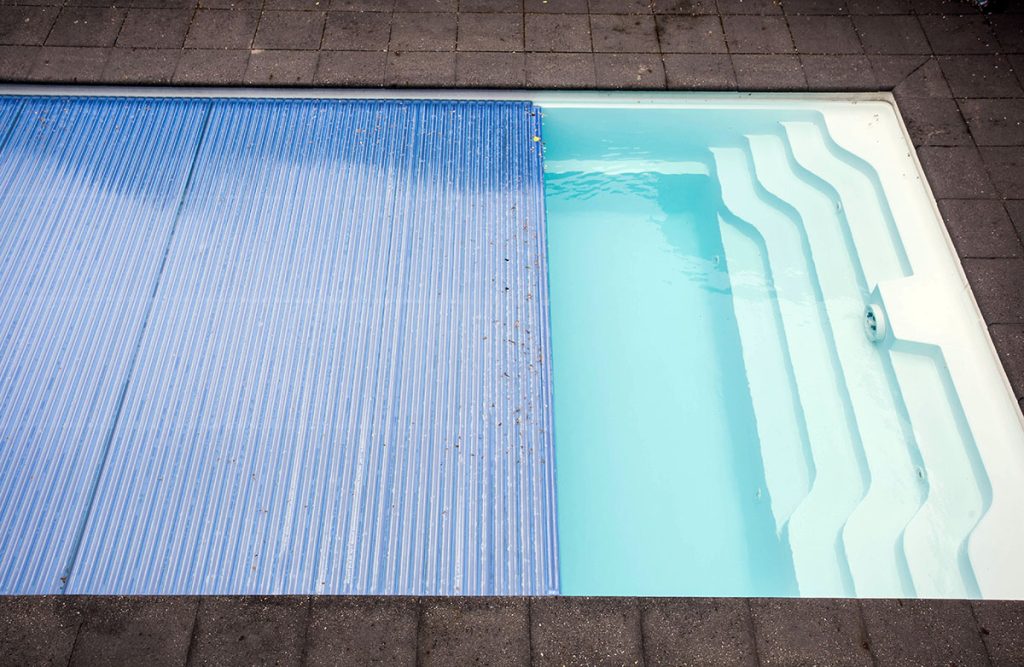
Swimming pool cover detail for protection and heat the water, pool roller-shutter covers close-up

